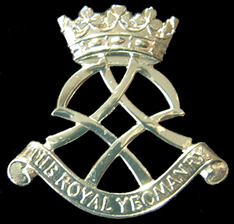
The Royal Yeomanry (RY) is the senior reserve light cavalry regiment of the British Army. Equipped with Supacat Jackal variants, their role is to conduct mounted and dismounted formation reconnaissance. The Regimental Headquarters is located in Leicester, with squadrons in Fulham, Nottingham, Dudley, Croydon, Telford, and Leicester. The regiment is part of the Royal Armoured Corps and is only reserve cavalry regiment to resubordinate into regular brigade as part of the Future Soldier Programme, which in turn arose from the Integrated Review of Security, Defence, Development and Foreign Policy published in March 2021.

The Sherwood Rangers Yeomanry (SRY) was a British Yeomanry regiment. In 1967 it was amalgamated with other units to form the Royal Yeomanry (RY), a light cavalry regiment of the Army Reserve. Originally raised as the Nottinghamshire Yeomanry Cavalry in 1794, the regiment was used on several occasions in the 19th Century to maintain law and order. During the Second Boer War and both World Wars the regiment earned 44 battle honours. It is now one of the six squadrons of the Royal Yeomanry (RY), a light cavalry regiment of the Army Reserve. Designated as 'A' Squadron, the Sherwood Rangers Yeomanry's current role is to support the Light Cavalry Regiments on operations by providing reconnaissance soldiers.

The Westminster Dragoons (WDs) was a yeomanry regiment of the British Army Army Reserve, located in central London. Its lineage is continued by one of the Royal Yeomanry's six squadrons. Formed in the aftermath of Second Boer War as part of the County of London Yeomanry, the WDs fought in the Battle of Gallipoli and led British forces onto the beaches during the Normandy Invasion in 1944. The squadron most recently saw action on Operation Telic for which it was mobilised for the 2003 war in Iraq.
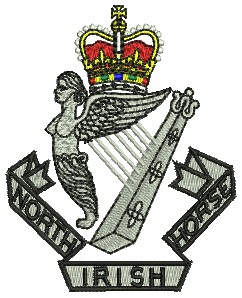
The North Irish Horse was a yeomanry unit of the British Territorial Army raised in the northern counties of Ireland in the aftermath of the Second Boer War. Raised and patronised by the nobility from its inception to the present day, it was one of the first non-regular units to be deployed to France and the Low Countries with the British Expeditionary Force in 1914 during World War I and fought with distinction both as mounted troops and later as a cyclist regiment, achieving eighteen battle honours. The regiment was reduced to a single man in the inter war years and re-raised for World War II, when it achieved its greatest distinctions in the North African and Italian campaigns. Reduced again after the Cold War, the regiment's name still exists in B Squadron, the Scottish and North Irish Yeomanry and 40 Signal Squadron, part of 32 Signal Regiment.
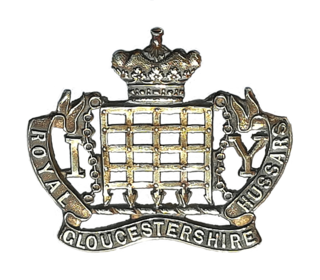
The Royal Gloucestershire Hussars was a volunteer yeomanry regiment which, in the 20th century, became part of the British Army Reserve. It traced its origins to the First or Cheltenham Troop of Gloucestershire Gentleman and Yeomanry raised in 1795, although a break in the lineage means that its formation is dated to the Marshfield and Dodington Troop raised in 1830. Six further troops – officered by nobility and gentry, and recruited largely from among landholders and tenant farmers – were subsequently raised in Gloucestershire, and in 1834 they came together to form the Gloucestershire Yeomanry Cavalry. In 1847, the regiment adopted a hussar uniform and the name Royal Gloucestershire Hussars. Originally intended to counter insurrection and a French invasion that never materialised, the yeomanry's first deployments were ceremonial and as mounted police during times of civil unrest. Three Gloucestershire troops were deployed to Bristol on two separate occasions in the 1830s in support of the civil authorities.
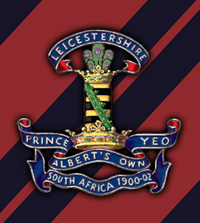
The Leicestershire Yeomanry (Prince Albert's Own) was a yeomanry regiment of the British Army, first raised in 1794 and again in 1803, which provided cavalry and mounted infantry in the Second Boer War and the First World War and provided two field artillery regiments of the Royal Artillery in the Second World War, before being amalgamated with the Derbyshire Yeomanry to form the Leicestershire and Derbyshire (Prince Albert's Own) Yeomanry in 1957. The regiment's lineage is currently perpetuated by E (Leicestershire and Derbyshire Yeomanry) Squadron of the Royal Yeomanry.

The Derbyshire Yeomanry was a yeomanry regiment of the British Army, first raised in 1794, which served as a cavalry regiment and dismounted infantry regiment in the First World War and provided two reconnaissance regiments in the Second World War, before being amalgamated with the Leicestershire Yeomanry to form the Leicestershire and Derbyshire Yeomanry in 1957.
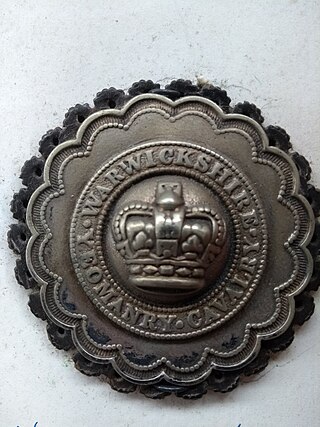
The Warwickshire Yeomanry was a yeomanry regiment of the British Army, first raised in 1794, which served as cavalry and machine gunners in the First World War and as a cavalry and an armoured regiment in the Second World War, before being amalgamated into the Queen's Own Warwickshire and Worcestershire Yeomanry in 1956. The lineage is maintained by B Squadron, part of The Royal Yeomanry.

The Lanarkshire Yeomanry was a yeomanry regiment of the British Army, first raised in 1819, which served as a dismounted infantry regiment in the First World War and provided two field artillery regiments in the Second World War, before being amalgamated into The Queen's Own Lowland Yeomanry in 1956. Its lineage was revived by B Squadron, the Scottish Yeomanry in 1992 until that unit was disbanded in 1999.

The Royal Wiltshire Yeomanry (RWY) was a Yeomanry regiment of the Kingdom of Great Britain and the United Kingdom established in 1794. It was disbanded as an independent Territorial Army unit in 1967, a time when the strength of the Territorial Army was greatly reduced. The regiment lives on in B and Y Squadrons of the Royal Wessex Yeomanry.

The Ayrshire Yeomanry was a Regiment of the British Yeomanry and is now an armoured Squadron of the Scottish and North Irish Yeomanry (SNIY), part of the British Army Reserve. It is the Lowlands of Scotland's only Royal Armoured Corps Unit and has an unbroken history stretching back to the 1790s.

The Fife and Forfar Yeomanry (FFY) was an Armoured Yeomanry Regiment of the British Army formed in 1793. It saw action in the Second Boer War, the First World War and the Second World War. It amalgamated with the Scottish Horse to form the Fife and Forfar Yeomanry/Scottish Horse in 1956. The lineage is maintained by "C" Fife and Forfar Yeomanry/Scottish Horse Squadron of The Scottish and North Irish Yeomanry based in Cupar in Fife.

The 3rd County of London Yeomanry (Sharpshooters) was a Yeomanry regiment of the British Army. It was raised in 1901 from Second Boer War veterans of the Imperial Yeomanry. During the First World War it served dismounted at Gallipoli, was remounted to serve in Macedonia, Egypt and Palestine, before being converted to machine gunners for service on the Western Front. 2nd and 3rd Line units remained in the United Kingdom throughout.

The Northumberland Hussars was a Yeomanry regiment of the British Army, transferred to the Royal Artillery for the duration of the Second World War. It was disbanded as an independent Territorial Army unit in 1967, a time when the strength of the Territorial Army was greatly reduced. The regiment's name lives on in the title of the command and support squadron of the Queen's Own Yeomanry (QOY), a Formation Reconnaissance Regiment based in Newcastle upon Tyne.
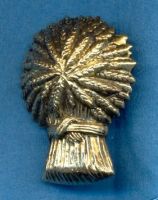
The Lothians and Border Horse was a Yeomanry regiment, part of the British Territorial Army. It was ranked 36th in the Yeomanry order of precedence and was based in the Scottish Lowland area, recruiting in the Lothians – East Lothian (Haddingtonshire), Midlothian (Edinburghshire), and West Lothian (Linlithgowshire) – and along the border with England, particularly Berwickshire. It amalgamated with the Lanarkshire Yeomanry and the Queen's Own Royal Glasgow Yeomanry to form the Queen's Own Lowland Yeomanry in 1956.

The North Somerset Yeomanry was a part-time cavalry regiment of the British Army from 1798 to 1967. It maintained order in Somerset in the days before organised police forces, and supplied volunteers to fight in the Second Boer War. It served on the Western Front in the First World War. At the outbreak of the Second World War, it continued to operate in the mounted role and then as a specialist signals unit. Postwar it joined the Royal Armoured Corps and later became infantry. Its lineage today is maintained by 93 Squadron 39 (Skinners) Signal Regiment.
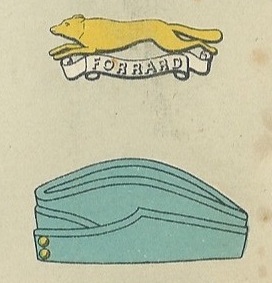
The East Riding of Yorkshire Yeomanry was a unit of the British Army formed in 1902. Units of Yeomanry Cavalry were raised in the East Riding of Yorkshire in the 18th and early 19th centuries at times of national emergency: the Jacobite Rising of 1745, the French Revolutionary Wars and the Napoleonic Wars. These were stood down once each emergency was over. The East Riding of Yorkshire Yeomanry, was established in 1902, and this saw action during the First World War both in the mounted role and as machine gunners.
The Queen's Own Royal Glasgow Yeomanry was a yeomanry regiment of the British Army that can trace their formation back to 1796. It saw action in the Second Boer War, the First World War and the Second World War. It amalgamated with the Lanarkshire Yeomanry and the 1st/2nd Lothians and Border Horse to form the Queen's Own Lowland Yeomanry in 1956. Its lineage was revived by B Squadron, the Scottish Yeomanry in 1992 until that unit was disbanded in 1999.

The Middlesex Yeomanry was a volunteer cavalry regiment of the British Army originally raised in 1797. It saw mounted and dismounted action in the Second Boer War and in World War I at Gallipoli, Salonika and in Palestine, where one of its officers won a Victoria Cross at the Battle of Buqqar Ridge and the regiment rode into Damascus with 'Lawrence of Arabia'. Between the world wars the regiment was converted to the signals role and it provided communications for armoured formations in World War II, including service in minor operations in Iraq, Palestine, Syria and Iran, as well as the Western Desert, Italian and North-West European campaigns. It continued in the postwar Territorial Army and its lineage is maintained today by 31 Signal Squadron, Royal Corps of Signals, which forms part of the Army Reserve.




















